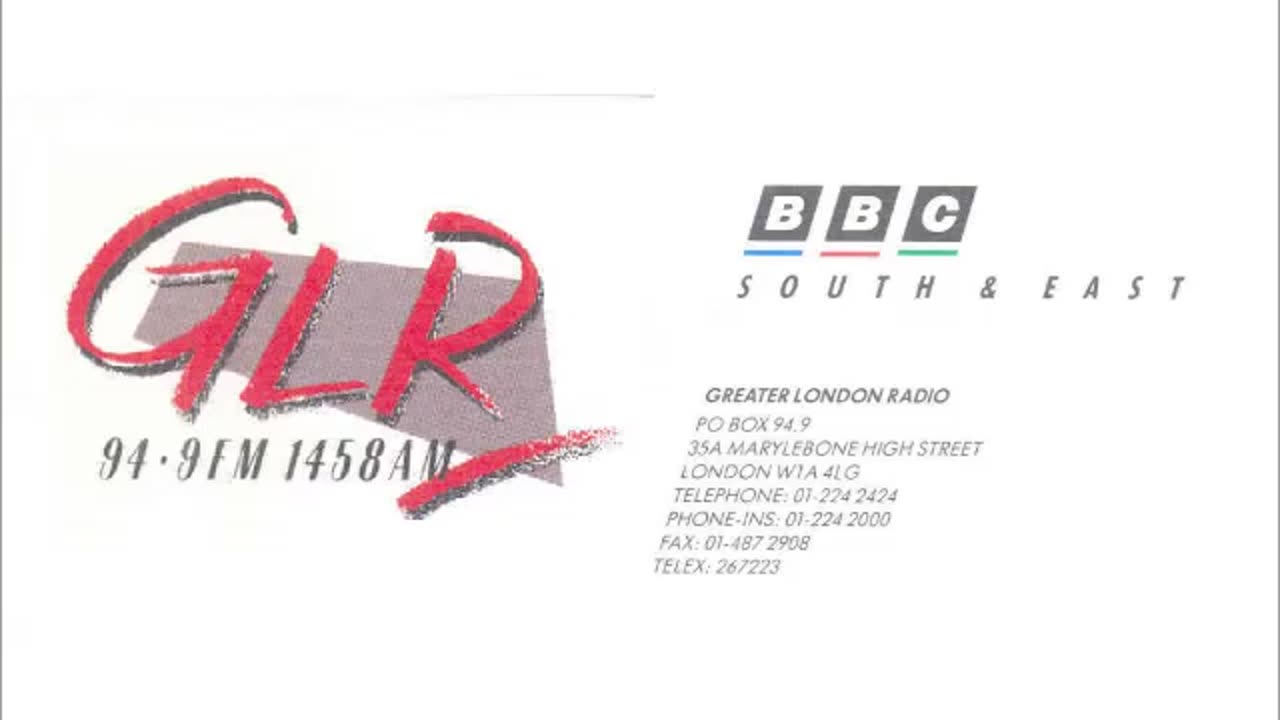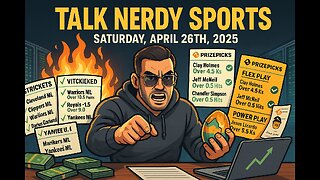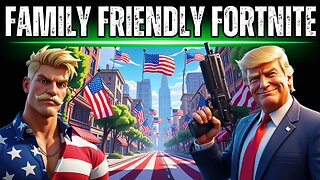Premium Only Content

BBC GLR 94.9 FM jingle carts compilation from a MHS production office researcher 1989-90
1988–2000: Greater London Radio (GLR) 94.9 FM
Test transmissions for the new Greater London Radio GLR began as soon as Radio London closed. Its pre-launch announcements stated in no uncertain terms that GLR was to be radically different in style. GLR was to be the first new radio station in London for 15 years.
GLR logo 1991
Heading the new station were Managing Editor Matthew Bannister and Programme Organiser Trevor Dann. Bannister came from Capital London, while Dann came from Radio 1, via BBC TV's Whistle Test, and developed an album-oriented music policy. GLR was aimed at people who hate pop but love music, hate prattle (excessive on-air talk) but want to know what's what where in the world. The station was aimed at 25 to 45-year-olds. Early promotions used the phrase "rock 'n' rolling news". Much of the daytime speech output covered London events and nightlife, with comedians and other artists being interviewed. The music mix was best described as Adult album alternative, though indie bands were also played.
Chris Evans took on a variety of roles on GLR, often presenting a weekend show, ending in 1993. Danny Baker presented Weekend Breakfast from 1989 to 1990 and then returned to present a Sunday morning show from 1996 to 1998. Janice Long presented the Breakfast show on the station from 1989 to 1991, and Kevin Greening started as a producer in 1989, before becoming a presenter of the Breakfast show with Jeremy Nicholas in 1991. Bob Harris also presented shows for the station from 1994 to 1998 after leaving BBC Radio 1. Early afternoon programming previewed London's entertainment scene, interviewing comedians and other performers. Richard Cook had a Saturday night jazz show.
Specialist speech programmes in the evening were aimed at London's communities: Asian, Afro-Caribbean, Jewish, Gay, and Irish. Black London was replaced with Margaret Jones (aka The Ranking Miss P). Later, a programme for the gay community, Lavender Lounge, was launched. It was presented by comedian Amy Lamé. Weekends featured extensive sports coverage, centring on football and London's numerous clubs such as Arsenal, Tottenham, and West Ham United.
In 1989, GLR set up a youth-based radio training facility at Vauxhall College, SW8, which was followed by a second course based at White City, W12. This was allocated funds from the London Borough of Hammersmith and Fulham and the British parliament.
GLR had the ability to directly access Scotland Yard's network of traffic cameras across London's busiest streets. This enabled its reporters, most commonly "Bob at the Yard", to give accurate traffic and travel news to its listeners. The reports were known as 20/20 Travel, named because its travel reports were read out every 20 minutes during peak times. No other radio station had this access for a while, even managing to outdo Capital Radio's traffic plane, known as the Flying Eye.
-
 LIVE
LIVE
GritsGG
3 hours ago#1 Warzone Win Grind! 🔥
51 watching -
 8:24
8:24
Talk Nerdy Sports - The Ultimate Sports Betting Podcast
3 hours ago4/26/25 - Saturday Annihilation: Vasil’s 8 Sharp Picks and 2 PrizePicks Built for Blood 💥📈
26.8K1 -
 LIVE
LIVE
GamingWithHemp
2 hours agoElder Scrolls Oblivion Remastered Episode #2 Ultra high settings
57 watching -
 2:11:49
2:11:49
Rotella Games
21 hours agoSaturday Morning Family Friendly Fortnite
12.9K5 -
 2:13:45
2:13:45
I_Came_With_Fire_Podcast
12 hours agoRESTRUCTURING THE WORLD- CIVICS CLASS WITH DAN HOLLAWAY
17.6K5 -
 DVR
DVR
Bannons War Room
2 months agoWarRoom Live
14.2M3.58K -
 LIVE
LIVE
Total Horse Channel
1 day agoYELLOWSTONE SLIDE I | SATURDAY
232 watching -
 23:52
23:52
The Rad Factory
5 hours ago $1.57 earnedIs My Formula Race Car Faster Than a Go Kart?
27.1K3 -
 20:56
20:56
marcushouse
5 hours ago $1.76 earnedStarship Flight Test 9 Vehicles FINALLY Prepare, and Huge Starbase Upgrades – It's All Happening!
27.7K13 -
 23:48
23:48
CatfishedOnline
19 hours agoVictim's Life is Threatened After He Gets in Too Deep With a Crypto Scammer
27.9K3